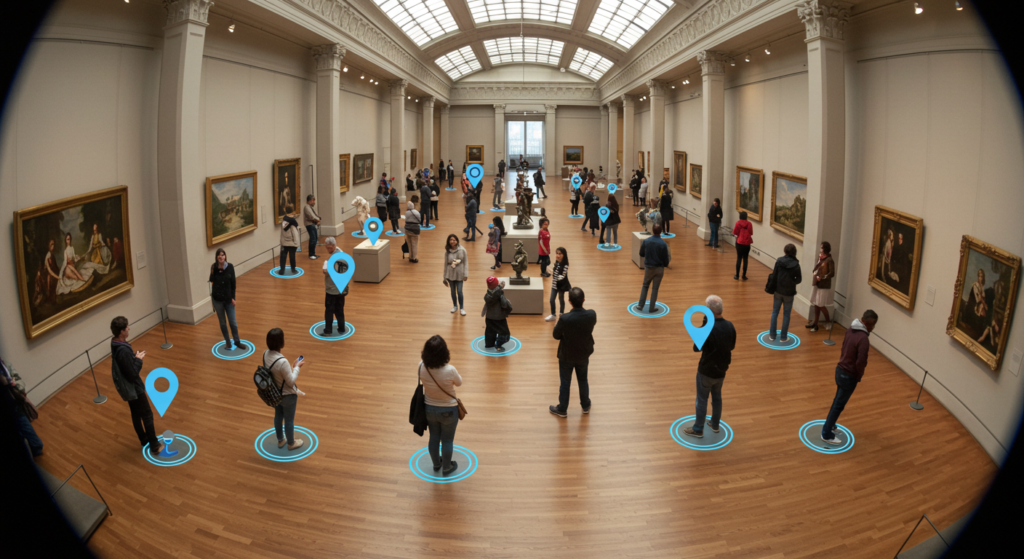Complacency, underfunded security, and misplaced trust have left the world’s collections more vulnerable than ever.
The recent thefts from the Louvre should shake every museum director and curator to their core. Prestige does not equal protection. A world-renowned name will not stop a determined thief. The world watched priceless works disappear from one of the most respected cultural institutions on Earth. If it can happen there, it can happen anywhere.
Too many museums have grown comfortable with risk. Security plans collect dust. Cameras and sensors age out. Guards are told to prioritize hospitality over vigilance. Leaders convince themselves that art heists are the stuff of cinema, not reality. That illusion has now collapsed. Criminals learn from success, and copycats are watching.
At Argus Cultural Property Consultants, we understand these threats from experience, not theory. Our team includes former FBI art crime agents, federal prosecutors, cultural heritage experts, and diplomats who have worked cultural property theft and recovery cases across the globe. We have investigated looted temples, tracked stolen icons, and negotiated the return of national treasures. We know what it looks like when prevention fails, and the cost is always greater than anyone expects.

Thieves Exploit Open Source Intel and Misplaced Trust
Art crime has evolved. It is now a global enterprise that fuses traditional theft with digital intelligence. Criminals gather data from social media posts, online catalogs, and museum websites. They study renovation schedules, shipment manifests, and publicly shared floor plans. Organized groups exploit these details, strike quickly, and move stolen pieces through complex international markets that are nearly impossible to trace.
They also exploit a weakness that nearly every organization on the planet shares: misplaced trust. Sophisticated criminal networks are adept at identifying and manipulating insiders, whether they be staff, vendors, contractors, or suppliers with access and knowledge. They look for people under financial pressure, facing personal crises, or with prior criminal ties, and use them as conduits.
Very few museums have any sort of insider-threat program, and periodic background reinvestigations are rare, to say the least. Institutions simply trust, and that just doesn’t work. The statistics are clear: Most museum thefts involve some element of inside knowledge, intentional or not.
Always Be Assessing Risk
Museums must treat security as a living practice, not a budget line. True protection begins with an honest assessment: where an institution is vulnerable, how fast it can respond, and who will lead that response when the worst happens. Argus helps museums and governments conduct those assessments and build layered defenses that integrate people, technology, and procedure.
All too often, museum leadership treats security as a necessary evil rather than a vital program worth embracing (and fully funding). The focus naturally drifts toward acquisitions, exhibitions, public programming, education, etc. All of these are central to a museum’s mission, of course, but so, too, is security.
Museums have a duty not only to educate and inspire, but also to protect and preserve. Why, then, are security programs so often the least funded, and security staff the lowest paid, in the institutional hierarchy?
I am not suggesting that security should overshadow scholarship or public engagement, but it must carry equal weight. Without protection, there is nothing left to educate from or reflect upon.

No single measure is enough. Locks can be bypassed. Cameras can be avoided. But when systems overlap, when human awareness, physical safeguards, and digital monitoring reinforce one another, they create a network that deters both opportunists and professionals. Security should be visible enough to discourage, yet discreet enough to preserve the visitor experience. The goal is not intimidation, but confidence.
Train Your Staff and Lean Into Technology
It’s never been easier to build effective museum security than it is today. Artificial intelligence and advanced analytics can now provide museums with tools they have never had before: real-time detection, behavioral pattern recognition, predictive alerts, and cross-system integration that amplifies human capability rather than replacing it.
Consider how different the outcome at the Louvre might have been if AI-based perimeter analytics or in-gallery anomaly detection had been in place. The thieves might never have reached their target, or at least, not escaped with it.
For institutions willing to adapt, AI is not science fiction; it is a practical force multiplier for security teams that have long operated with limited resources.

Still, technology alone can’t solve the problem. The human element remains the strongest defense. Training every staff member, from ticket clerks to curators, creates a culture of awareness that costs little but saves collections. The same principle applies online. Digital archives, shipping data, and donor databases must be guarded as carefully as what hangs on the walls.
If the unthinkable does occur, the crisis doesn’t end with the theft. It begins there. The first hours determine how the public, donors, and governments respond. A well-prepared crisis communication plan is as vital as an alarm system. Institutions must be ready to speak with one voice, confirm facts quickly, and demonstrate control.
Confusion and silence can erode credibility faster than any stolen object. At Argus, we advise clients to integrate communication planning into their overall security strategy, protecting not only their collections but also their reputation.
Museums Must Prioritize Security and Crisis Planning
Once a masterpiece is gone, its loss ripples far beyond financial value or reputational harm. The deeper damage is cultural and emotional. These objects are not just art; they are our history, identity, and testimony to human achievement. When they vanish, so does part of our shared story.
Museum boards and directors have a moral duty to protect that story. They must move beyond symbolic concern and act decisively: conduct regular security reviews, invest in staff training, and engage professionals who understand not only the criminal mindset, but also the museum environment and the realities of international recovery.
The Louvre heist on October 19 should mark a turning point for museums across the globe. This crime exposed what many institutions prefer not to admit: reputation is not a shield. Every collection, regardless of size or fame, is vulnerable. The difference lies in preparation.
Security and crisis planning are not luxuries for major institutions. They are imperatives for any organization that stewards human history. Protection begins long before the first alarm sounds or the first reporter calls.
The Louvre theft will not be the last, but it should be the last to catch the museum world unprepared. The responsibility now rests with those who safeguard humanity’s treasures to act decisively and think differently. Let’s stop assuming our collections are safe.

